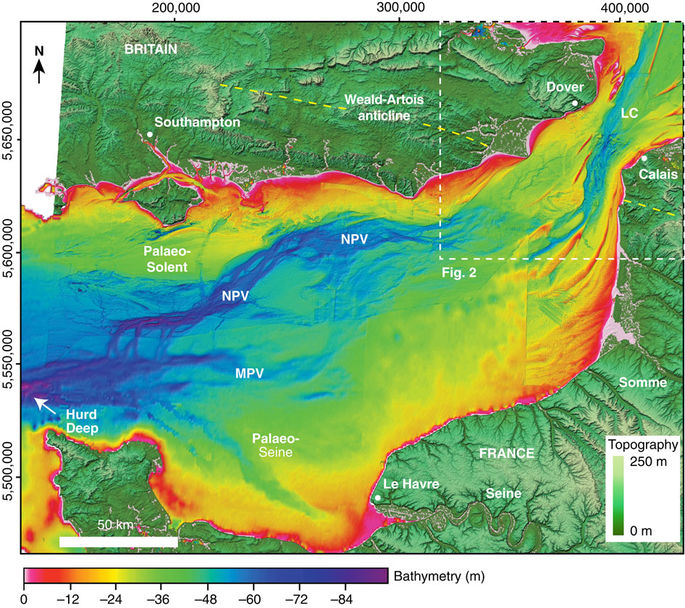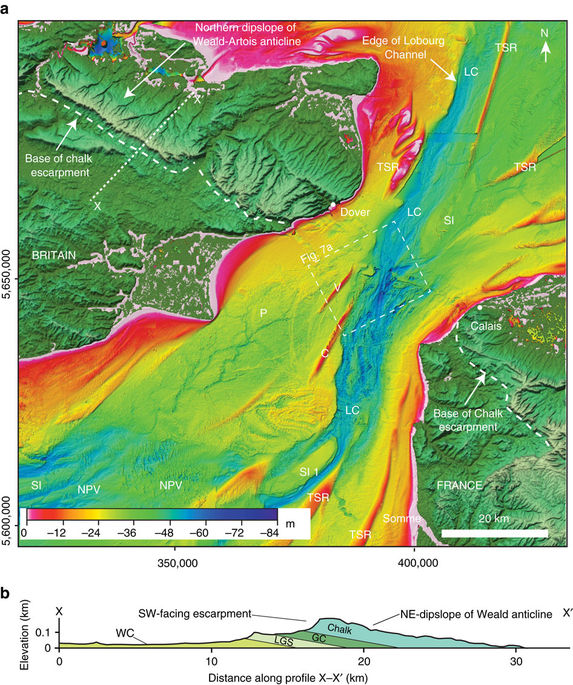I like the headline on this story – Britain's first departure from Europe (in this case a geological brexit) – go to www.nature.com/articles/doi:10.1038/ncomms15101 … which concerns a paper attempting to pin down when the chalk ridge between Calais and Dover was first breached. It is assumed a large glacial lake had formed during or at the end of the Anglian Ice Age in what is now the North Sea basin. This tudy proposes the breach came in two stages. In the first instance the glacial lake created waterfalls over the chalk ridge and the proof of this is found in some deep depressions as might occur in plunge pools at the bottom of waterfalls such as Niagara. The second event was a catastrophic breach through the chalk ridge (currently undated) that carved out a deep valley at the bottom of what is now the English Channel. The authors also admit that water covered the chalk ridge on a couple of other occasions during the Late Pleistocene as a result of changes in sea level. If these were primarily due to changes in earth's geoid rather than global gains in ocean water volume (or decreases) one may see this sort of thing slightly differently to mainstream. However, the geology of the chalk ridge seems to show that a lot of water at one point, or at more than one point (different ice ages) caused changes to the chalk formation (on land as well as what chalk remains under the sea). The clay and flints geology appears to have an origin in water – glacial melt waters, perhaps. Large portions of the Upper Chalk have been washed away – and in the hollows and valleys thus created it left behind clay geology. This included flints that had been washed out of the chalk but remained behind as the chalk was eroded or became a marl deposit (chalk and clay). Have they found something similar in the Channel? An association with the Anglian ice age, around 450,000 years ago, seems appropriate as this extended deep into lowland England and the geology of this can best be seen in East Anglia. Large boulders of chalk were detached and rest on cliffs of boulder clay etc. Lots of evidence of this on the internet – especially at local geological society pages.


